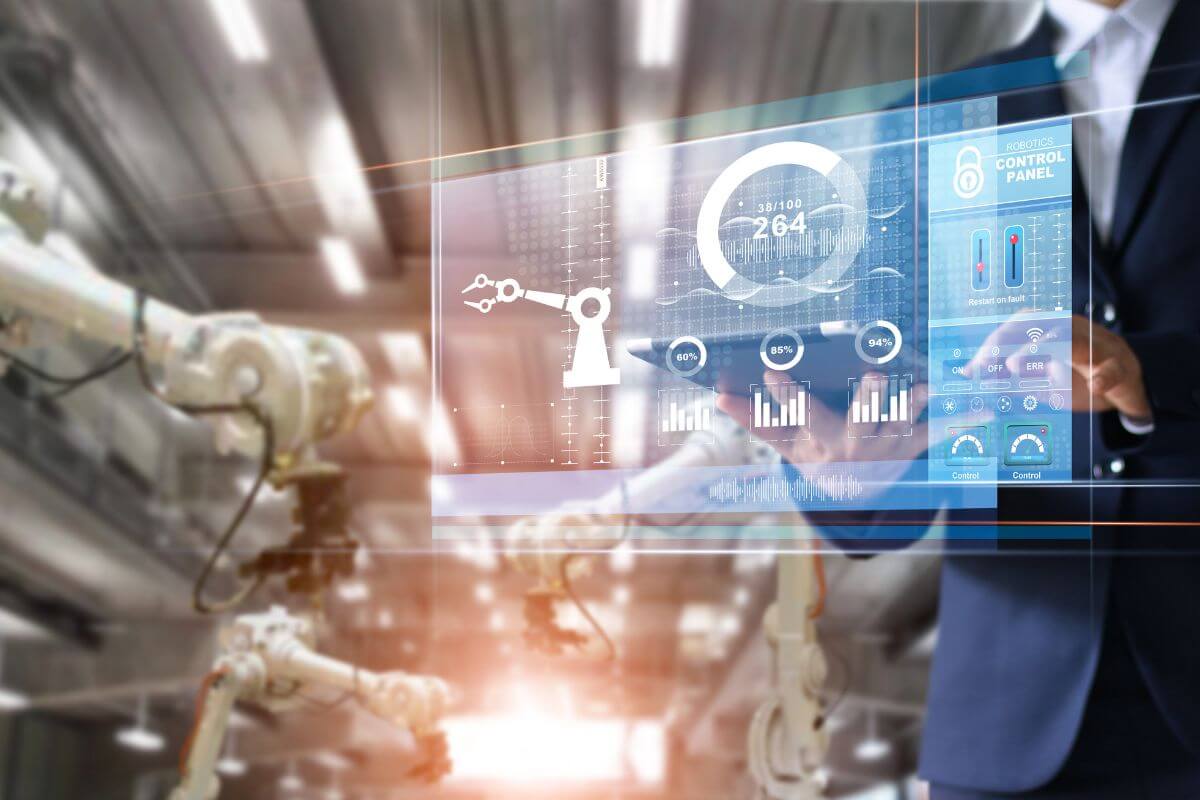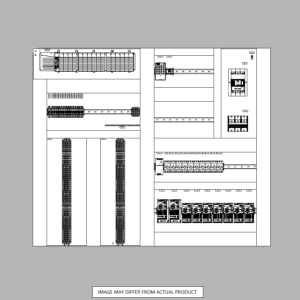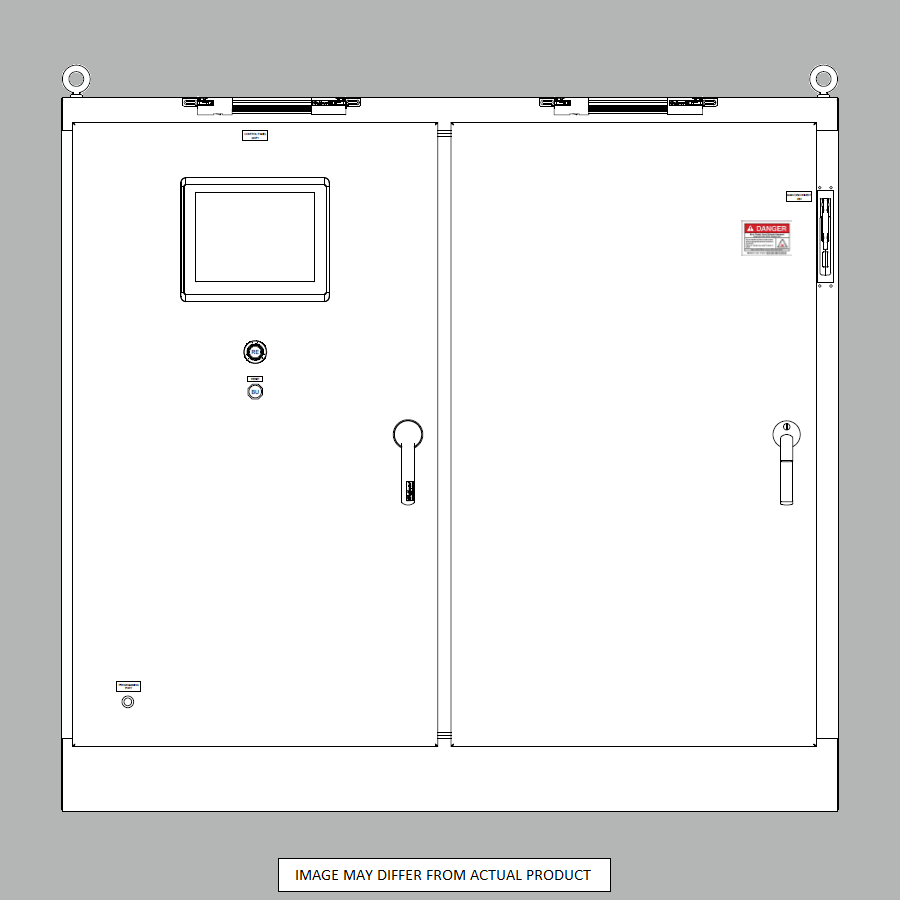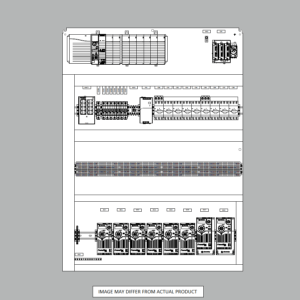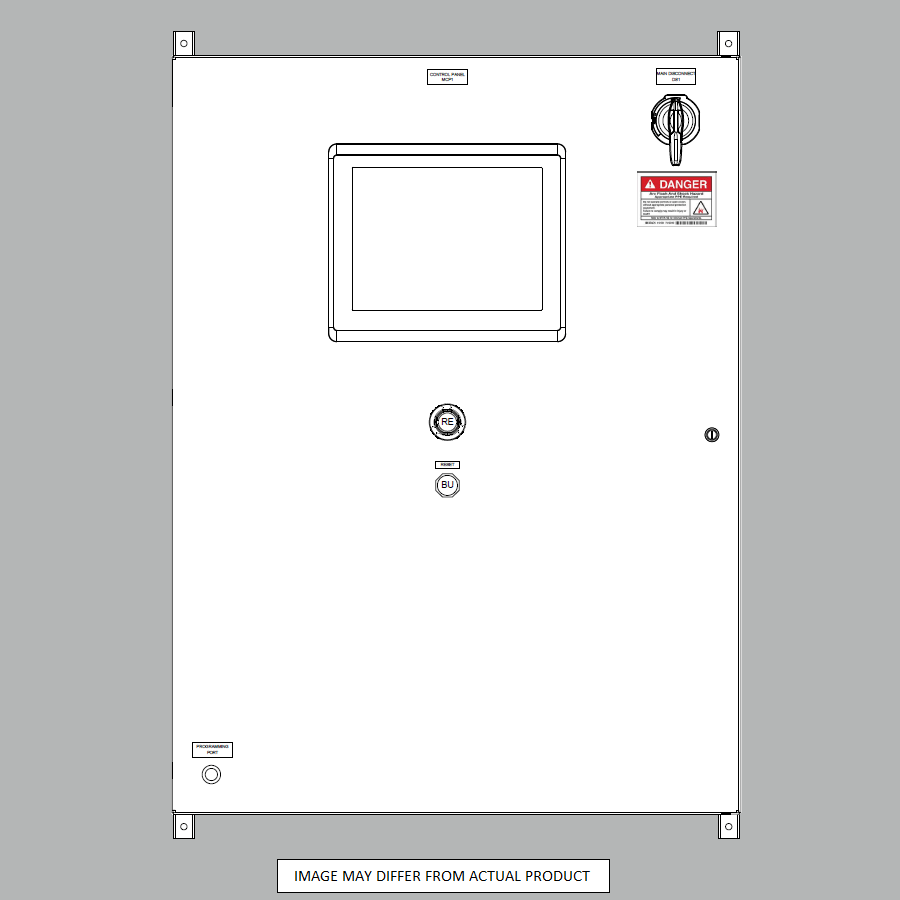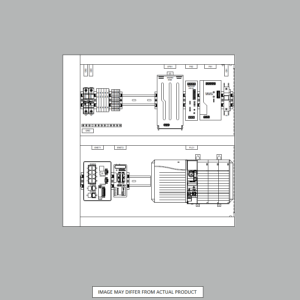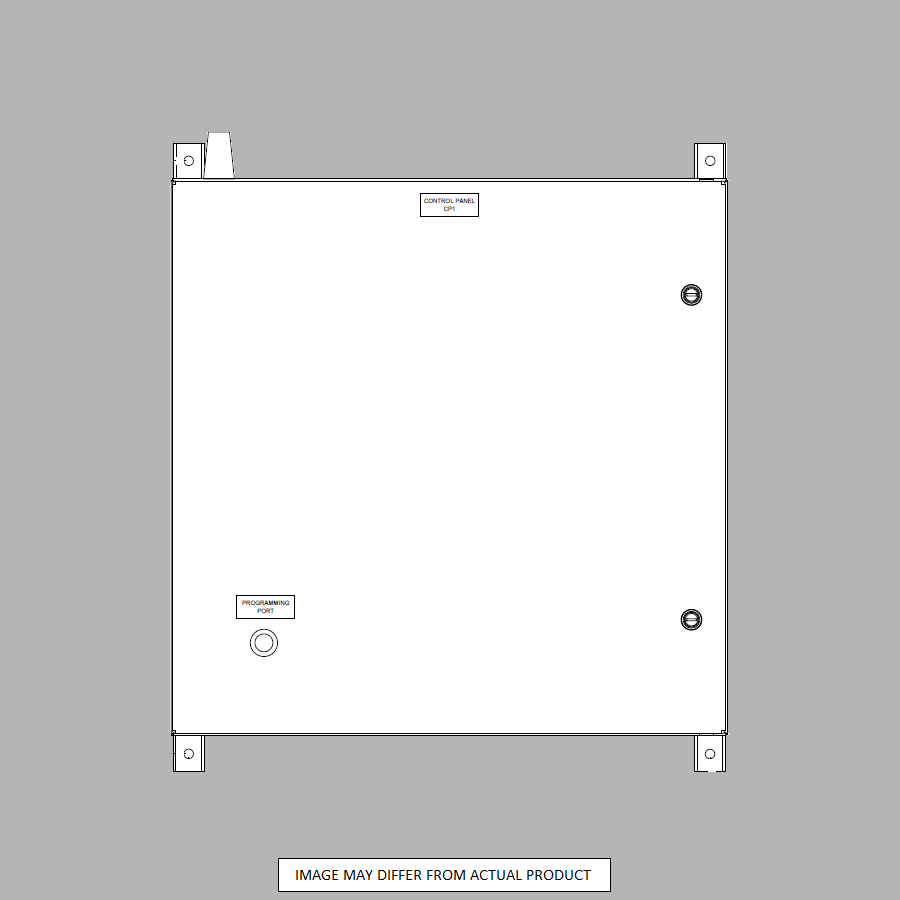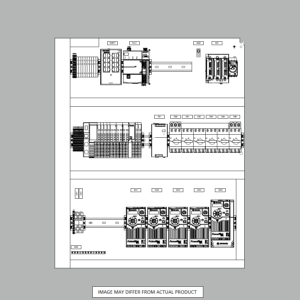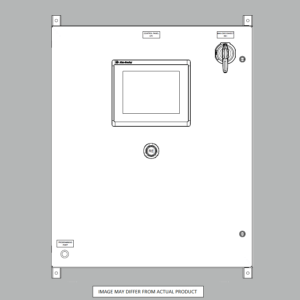Factory Automation: Digitizing Your Factory with PLC Solutions
Factory operation is changing. We are now in a time where computers and technology help us do things better and faster. This is called Factory Automation. Think of it as giving your factory a digital brain!
At the center of this are things called Programmable Logic Controllers (PLCs). They’re like the brain’s helpers. They help control everything smoothly. With PLCs, people in charge can easily make choices and control how things work.
This article will help you understand what Factory Automation is and how PLCs can make your factory smarter and better. By mixing new tech with old ways, factories can do more work in less time and earn more money.
Remember, a smarter factory means a brighter future. Let’s dive in and learn more!
What is a PLC and Why is it Important?
A Programmable Logic Controller (PLC) is like the brain behind most automated systems in factories. Think of it as a special computer. It’s built tough so it can work in places with a lot of dust, heat, or noise. It takes in information (from things like sensors or buttons), thinks about it using a set program, and then tells other devices (like motors or lights) what to do.
In simpler words, a PLC works much like the computer you use at home, but it’s built for factories and has to make decisions really fast.
Why is the PLC so crucial in factories? Because it helps everything run smoothly. With a PLC, factories can make products faster and with fewer mistakes. This saves time and money. It’s like having a super-efficient manager on duty all the time, making sure everything goes as planned.
Plus, a PLC can “talk” to other PLCs or computers. This means factories can have a big network where all machines work together. So, when we talk about PLCs, we’re not just discussing a gadget. We’re talking about a tool that has changed the way factories work, making them smarter and better.
Why Do Factories Need Automation Today?
In today’s tech-savvy world, factories are changing big time. They’re moving towards more automation, which means more machines are doing the work. Why? There are a few big reasons.
First off, machines and robots, with the help of smart tech like artificial intelligence, can work super fast and make fewer mistakes. This means factories can produce more, faster, and at a lower cost. Plus, these machines can work all day and night, something humans can’t do.
People nowadays want things quickly and made just for them. To give people what they want, factories need to change their production quickly. With automation, it’s easier to switch things up and meet these demands.
Also, there’s a big push for “going green” and reducing harm to our planet. Automated factories are often better at saving energy and reducing waste. So, they can help businesses be more eco-friendly.
In short, for factories to keep up with the times and what people want, automation is the way to go. It’s faster, more flexible, and can even be better for the environment.
How Going Digital is Changing Factory Operations?
Factories are getting a major tech upgrade. We’re seeing what we call a “Digital Factory.” Imagine a place where machines, computers, and even products talk to each other using the latest tech. This is a big part of something called Factory 4.0, where everything is connected, from computers to machines.
So, why are factories going digital? There are some big wins here.
- Work Smarter, Not Harder: Digital factories are more efficient. For example, they can predict when a machine might break down and fix it before it causes a problem. This means less wasted time and more quality products.
- Stay Flexible: With everything connected, it’s easier to see what’s going on in the factory. If there’s a sudden big demand for a product or a problem in getting materials, factories can quickly adjust.
- Innovate Faster: With all the data from a digital factory, businesses can come up with new products or improve old ones. It’s all about using that information to stay ahead in the market.
In simple words, going digital is helping factories do better work, react faster, and come up with cool new stuff. It’s a game-changer for how we make things.
Why Factories are Teaming Up Automation and PLCs
Pairing factory automation with Programmable Logic Controller (PLC) solutions is like adding a turbo boost to how factories run. In simpler words, PLCs are special tools that help machines work together smoothly, reducing the need for people to watch over every step.
Big companies worldwide use this combination. Take Siemens, for example. They’re a huge company that makes lots of stuff, and they use PLCs to make sure their factories work like clockwork.
Here in the U.S., General Motors, a big car maker, also uses PLCs to automate their factories. This just goes to show that using PLCs with automation is a big deal for keeping factories running at their best.
In short, when you mix factory automation with PLCs, factories can do more, quicker, and with fewer hiccups. It’s a winning combo in today’s tech-filled world!
Why Going Digital with PLCs is a Game Changer for Factories
When you mix digital tech with PLCs (Programmable Logic Controllers) in factories, magic happens! Here’s why this combo is awesome for businesses:
Work Faster and Smarter: With PLCs, machines can talk to each other and make decisions. This means fewer mistakes and less time wasted. If something starts to go wrong, the system can spot it early and fix it, saving time and money.
- Better Products: PLCs make sure machines work precisely. This means products are made correctly the first time, cutting down on waste and ensuring customers get the best.
- Grow with Ease: As your business gets bigger or starts making new things, PLCs can adapt. They’re flexible and can handle more work or different tasks without a fuss.
- Stay Safe and Follow the Rules: PLCs keep a watchful eye on everything, ensuring machines are running safely and following industry standards. They also keep records, making sure everything’s up to code.
In short, using PLCs to digitize factories makes them faster, better, and ready for the future. It’s a smart move for any business looking to stay ahead.
Understanding the Hurdles in Introducing PLCs to Factory Automation
Introducing Programmable Logic Controller (PLC) driven solutions to factory automation is undoubtedly transformative. However, it’s not without its challenges.
One primary concern is the initial investment. Procuring and installing these advanced systems often require a substantial financial outlay. Beyond the direct costs, the time and effort required for proper installation can be considerable.
Another significant challenge is the dearth of qualified professionals. PLC systems, being intricate, demand a high level of expertise for operation. Many enterprises might find themselves without the necessary in-house expertise. Upskilling existing employees or hiring new ones with the requisite skills can be both costly and time-intensive.
Furthermore, the process of integrating PLC solutions into pre-existing systems can be fraught with difficulties. Every automation system is unique, making it challenging to ensure that new and old systems communicate without hitches. Potential compatibility problems could lead to unexpected operational halts or even system malfunctions.
PLC-driven solutions are poised to revolutionize factory automation, businesses must navigate:
- Significant upfront costs and intricate installations
- The challenge of securing or training skilled professionals
- Potential integration issues with pre-existing systems
It is essential for organizations to weigh these factors diligently when considering the transition to PLC-driven automation.
Strategies for Successfully Introducing PLCs into Factory Operations
Embarking on a journey to implement PLC (Programmable Logic Controller) driven solutions in factory settings does come with its challenges. However, with strategic approaches, these hurdles can be surmounted.
- Prioritize Employee Training: The power of a PLC system is realized only when operated by skilled hands. Investing in comprehensive training programs ensures staff can confidently and competently handle these advanced tools. Regular workshops can help to reinforce learning and ensure consistent performance.
- Collaborate with Industry Experts: Seeking guidance from established PLC solution providers can significantly streamline the implementation process. Their vast experience and insights will prove invaluable, helping to sidestep common issues and ensuring a smooth transition.
- Adopt a Staged Approach to Digital Transition: Instead of an abrupt shift, consider gradually introducing the PLC-driven operations. Begin with simpler processes, allowing employees to familiarize themselves with the technology. As comfort and competence grow, more complex tasks can be tackled.
While the road to integrating PLC solutions might seem daunting initially, with thoughtful planning and the right strategies, the benefits of enhanced efficiency and reduced operational costs can be realized.
The Future of Factory Automation: What to Expect
Factory automation is on a fast track of evolution. Let’s dive into the key trends we anticipate shaping this transformation:
- IoT and AI Taking the Lead: The combination of the Internet of Things (IoT) and Artificial Intelligence (AI) is paramount. Factories are getting smarter, with machines and systems using data to improve operations. They can even predict when maintenance is needed before a breakdown occurs.
- A Rising Focus on Cybersecurity: With more digital tech in factories, there’s more data at risk. As a result, strong security measures are crucial to guard against ever-changing cyber threats, ensuring both data safety and smooth operations.
- Advancements in PLCs for Industry 4.0: The role of Programmable Logic Controllers (PLCs) is expanding. They’re not just controlling machinery anymore. As factories get smarter, PLCs are adapting to work in sync with the latest tech, serving as the brains managing intricate industrial tasks.
In essence, these trends provide a roadmap of what’s next in factory automation. As businesses look ahead, understanding and adapting to these trends will be key to staying competitive and efficient.
Factory Automation: Understanding the Modern Role of Programmable Control Panels
Factory automation is ever-evolving, and at its forefront is the transformation of programmable control panels. Previously functioning as isolated units, these panels are now becoming connected pieces of the vast Internet of Things (IoT) network. So, why is this connection essential, and how does it redefine factory automation?
The Connectivity Evolution in Control Panels
Historically, control panels had a specific, limited role. Now, the digital age allows these panels to talk to various networks and devices. This connectivity, whether via Ethernet, Wi-Fi, or cellular pathways, lets control panels interact with cloud-based systems, servers, or even distant devices.
Why Do Internet-Linked Programmable Control Panels Matter?
- Data Insights: Real-time data means factories can use advanced analytics for tasks like equipment monitoring, proactive maintenance, and streamlining operations. Detecting potential issues before they escalate becomes simpler and more efficient.
- Support from Afar: Experts can diagnose and rectify issues remotely, eliminating the need for on-site visits for every minor problem. This capability streamlines troubleshooting and software updates.
- Adaptability in Operations: Connected control panels can easily integrate with other systems. This adaptability means that production adjustments, new equipment introductions, or responding to market changes become more agile.
- Always-On Monitoring: Real-time operational oversight is available from any location, ensuring managers are always in the loop about production, quality, and stock levels.
- Easy Expansion: As business needs grow, connected control panels can be integrated into broader networks without major disruptions, ensuring scalability.
- Safety and Regulatory Adherence: Modern panels come with enhanced security features against potential cyber threats. The constant data flow also ensures compliance with industry regulations, providing transparent operational records.
- Economic Benefits: The blend of proactive maintenance, remote problem-solving, and heightened operational awareness can lead to significant savings, enhancing factory productivity and profitability.
In conclusion, the transition to internet-enabled programmable control panels is not a fleeting phase but the trajectory of modern factory automation. Their integration offers a range of benefits, from enhanced data utilization to remote operational capabilities. As industries further adopt digital solutions, it’s evident that these interconnected control panels will be central to the future narrative of factory automation.
Factory Automation 4.0 and IIoT: Steering Modern Manufacturing
Today’s manufacturing scene is seeing a groundbreaking shift, spurred by swift digital developments. At this transformation’s core lie Factory 4.0 and the Industrial Internet of Things (IIoT). Let’s delve into these concepts and their implications for Factory Automation’s future.
Decoding Factory 4.0
Often referred to as Industry 4.0, Factory 4.0 marks the fourth wave in industrial progression. It integrates numerous digital technologies, aiming to birth “smart factories.” These factories employ automation, data analytics, AI, among other sophisticated technologies, refining their functions. Central to Factory 4.0’s impact is its capacity to unify machines, processes, and people, allowing real-time interactions and informed decision-making.
IIoT’s Part in Factory 4.0
The Industrial Internet of Things (IIoT) can be likened to Factory 4.0’s backbone. It weaves a network of tools, machines, and systems, each fitted with sensors and communication capabilities, facilitating data exchange. Here’s a glimpse at IIoT’s instrumental role in contemporary Factory Automation:
- All-encompassing Connectivity: IIoT links countless devices, ensuring an interconnected and communicative production procedure.
- Insights from Data: IIoT equips factories to amass vast data instantly. Analyzing this data can spotlight avenues for operational streamlining, efficiency hikes, and cost reductions.
- Anticipatory Maintenance: IIoT’s persistent surveillance can forewarn about impending equipment issues, trimming downtime and fortifying production continuity.
- Distance-Defying Oversight & Command: Factory oversight isn’t bound to physical presence. Thanks to IIoT-anchored Factory Automation, operations can be directed and observed from afar.
- Boosted Tailoring: Real-time production line modifications powered by IIoT pave the way for enhanced product customization, maintaining efficiency.
Factory 4.0 and IIoT: An Inseparable Duo
It’s evident that while Factory 4.0 sketches the manufacturing future, IIoT arms it with the needed tools. Their interdependence is undeniable. Factory 4.0 sketches the plan, while IIoT, with its connectivity, data, and instant insights, materializes this plan.
Factory 4.0 and IIoT aren’t mere trending terms in Factory Automation—they herald a novel industrial chapter. A chapter distinguished by factories’ agility, adaptability, and unparalleled operational acumen. As we venture further into this thrilling industrial metamorphosis, the merger of Factory 4.0 ideologies and IIoT functionalities will undeniably reshape manufacturing’s essence.
The Symbiotic Trio – PLCs, Factory Automation 4.0, and IIoT in Modern Manufacturing
In the ever-evolving landscape of manufacturing, the integration of PLCs (Programmable Logic Controllers) in factory automation stands as a testament to innovation and progress. When this amalgamation is further enriched with Factory 4.0 philosophies and IIoT’s vast connective capabilities, we witness a formidable force driving modern manufacturing. Here’s a closer look:
- Efficiency at Its Peak: With PLCs at the helm, factory automation achieves unparalleled operational precision. Coupled with IIoT’s expansive networking and Factory 4.0’s intelligence, this trio embodies the essence of proficient, smart, and rapid manufacturing.
- Prepping for Tomorrow, Today: Factory automation, guided by Factory 4.0 and powered by PLCs, isn’t merely keeping pace with the future—it’s shaping it. As challenges emerge, this robust combination ensures we’re not reacting, but rather, proactively strategizing.
- Pioneering with Integrated Solutions: The domain of manufacturing is ever-changing. Factories that harness PLC capabilities, tap into IIoT connectivity, and adapt to Factory 4.0 principles aren’t just sailing through these changes—they’re leading the fleet. They set benchmarks in production speed, quality, and also pave the path for peers.
To encapsulate, the future of factory automation is luminous, brimming with opportunities. As PLCs, Factory 4.0, and IIoT converge, they not only elevate the realm of manufacturing but also set forth a trajectory of unceasing innovation and excellence. We stand at an exciting juncture in factory automation, where creation seamlessly merges with innovation.
About Automation Ready Panels:
If you’re looking for top-of-the-line electrical control panels and automation solutions, including industrial automations and process automations, you’re in the right place with Automation Ready Panels.
We have a reputation for delivering exceptional, ready-to-go control panels. No matter how complex or large-scale your requirements might be, we’ve got the expertise and cutting-edge technology to get it done efficiently. What sets us apart is not just our commitment to quality but also our unwavering work ethic.
Reasons to choose Automation Ready Panels:
- Problem Solvers at Heart: We don’t just hear; we listen. Understanding your challenges allows us to design products that address them directly. Boasting over 20 years of experience, we’ve catered to a diverse range of industries, from startups to established factories.
- Rapid Setup: We’re all about saving you time. Our offerings include pre-set network switches, drives, foundational HMI programming, and PLC logic, ensuring your machinery is up and running in no time.
- Quality Above All: We’re meticulous. Every step in our production process undergoes rigorous checks, leading to fewer errors and a product you can trust.
- Thoroughly Tested: Our commitment doesn’t end when our product is made. Each panel undergoes comprehensive electrical and software tests to ensure every aspect, from voltage to software functionality, is impeccable.
Choose Automation Ready Panels for uncompromised excellence. Shop now or Talk to us today.
SHOP NOW
-
Large Process Automation: Panelview 5000, ControlLogix 5580
$21,389.00 Select options -
Small Process Automation: Panelview 5000, ControlLogix 5580
$17,999.00 Select options -
Small Process Automation: ControlLogix 5580, UPS Battery Backup, Cellular Modem
$16,999.00 Select options -
Advanced Automation: Panelview 5000, Safety CompactLogix 5380
$8,499.00 Select options

